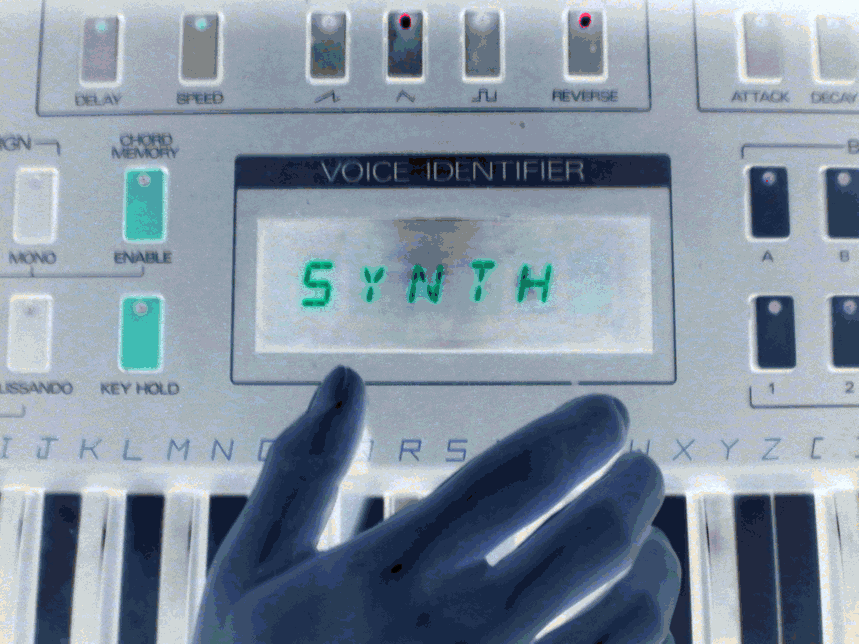€90,404
117
Introduction
The GR-1 is a hardware polyphonic granular synthesizer in a class of its own. The GR-1 is capable of creating textures, characteristic sounds, drones, soundscapes, pads etc. with the help of your creativity! A sample and a few knob tweaks is enough to create something beautiful!
A truly high-end device
The GR-1 is massively polyphonic: 128 grains per voice, times 16 voices = 2048 grains in parallel. It employs 32 bit mixing and a HIFI stereo DAC for rendition. A 7″ full colour display that is typically only found in top class synthesizers. It can use (USB or DIN) MIDI keyboards, USB sticks/disks, USB audio interfaces, and even PC keyboards. Yet it also features CV interfaces for integration with Modular (Eurorack) systems.
Easy to use
The on-board controls and MIDI connectivity make it extremely easy to manipulate sound. Directness is nr. 1 in the design: knobs and sliders allow all granular parameters to be changed in seconds. The GR-1 also allows stand-alone operation: No MIDI keyboard required! The GR-1 has buttons and sliders to create 4 note chords or drones. (see video demo, stand-alone “play” mode) Use the built-in headphone amp to create sounds fully standalone. It’s modest form factor of 32 x 21 cm and light weight allow it to be taken everywhere in a small backpack.





Specifications
- 128 grains per voice
- 16 voice polyphony
- Standalone or MIDI controllable
- MIDI IN & MIDI THRU connection with DIN and USB MIDI
- High quality stereo audio: internally: 32 bit float, DAC: 44.1KHz, 106 dB SNR
- High quality headphone amplifier with dedicated volume control
- Quad core ARM Cortex-A running optimized Neon SIMD code.
- 800 x 480 pixel, 7” TFT true color display
- Firmware updates via USB
- Sample file uploads in multiple formats via USB
- The GR-1 can handle 32 sample files of 10 MB (about 2 minutes long)
- Presets and performances can be saved to internal flash (4GB) or external (USB) memory
- 2 control voltage assignable inputs 0-5V with voltage protection
- 1 gate output
- 12dB/oct digital lowpass filter with direct and MIDI controls
- 2 assignable LFO’s with waveforms (sine, random, saw, square) and direct controls
- 4 banks of 8 presets all hands-on accessible and overwritable
- ADSR amplitude envelope and Grain window envelope with direct controls
- Rotary encoder for configuration, file/sample selection. Config menus provide extended possibilities beyond what the pots and sliders offer.
- Access to configuration screen providing many more options
- 32 x 21 x 7 cm aluminum casing.
- Full MIDI control: All on-board sliders and knobs, and internal controls are represented as MIDI CC. Full support for program change, pitch bend.
- Ability to read and write any USB stick or drive: FAT, ExFat, NTFS (Windows), HFS+ (Mac), Ext4 (Linux).
- Much more to be added by firmware updates: fully exposed mod matrix, another mode of granular synthesis (very small sample loops), MIDI clock sync, LFO cross mod, and stretchgoals (see below!)
Schematic hardware overview:


Performances & Patches
This synth is not only usable in your studio, it is also perfect for live performances. Pocket Knife Army shows us why:
Performances and patches can easily and directly be saved, loaded and copied.
There are 4 banks of 8 overwritable preset buttons, within a performance. This means you can save 32 presets, each with different samples in a single performance. You can save as many performances as your USB disk can store! Samples can be loaded in the blink of an eye.
Also each performance has its own MIDI settings, hardware settings (like LED brightness) and you can even toggle setpoints on for knobs and sliders, displaying and locking the last state of the control.

Quick start guide and user manual
The GR-1 comes well documented with a printed quick-start guide in the box. The manual is a 50 page illustrated PDF which covers every aspect of operation, step-by-step. Download the manual here. (This is the 30 page version, excludes stretch goals)

Sound
How does it sound? Here are some dry (no effects, non processed, GR-1 only) audio demo’s:
Video
Creating patches, showing the display visuals (captured straight from the GR-1 with an HDMI capturer) and some of the many features:
Creating a chord using the stand-alone “play” mode:
What this means for us
The GR-1 is a dream we’ve had for 3 years. We went the extra mile to do it right and were not afraid to invest a lot of time and effort. The GR-1 is an innovative synth, carefully designed by a skilled and ambitious team of nerds/musicians. We love music, we love synthesizers and with that mindset and motivation we want this high-end, innovative and affordable musical instrument to get on the desks of all kind of creative minds!

Stretchgoals
We have some really cool stretch goals to offer. The GR-1 can do firmware updates via USB, these extra features will NOT effect/delay the first batch.
€50,000: Sampling via USB interface/dongle. Record and save samples on the GR-1.
€65,000: There are 2 knobs that now control a lowpass filter. This stretch goal makes it possible to load different effects (more filters, delay, distortion, bitcrusher/sample rate reducer, etc.).
€70,000: Sub (sine) oscillator with control over pitch and amplitude will be added to the GR-1. This will make it possible to add a sub bass to your patch or add harmonic foundation to your patch.
€100,000: Map MIDI notes to different sample positions. This makes it possible to play multitimbral and layer samples with a good preparatoin of samples,here is a small hack as a tease:
€120,000: Ok this is without a doubt the coolest stretch goal of all..: Play multiple (at least 2) patches at the same time. Each MIDI channel will correspond to a different patch. You will be able to layer patches and make multitimbral sounds.













